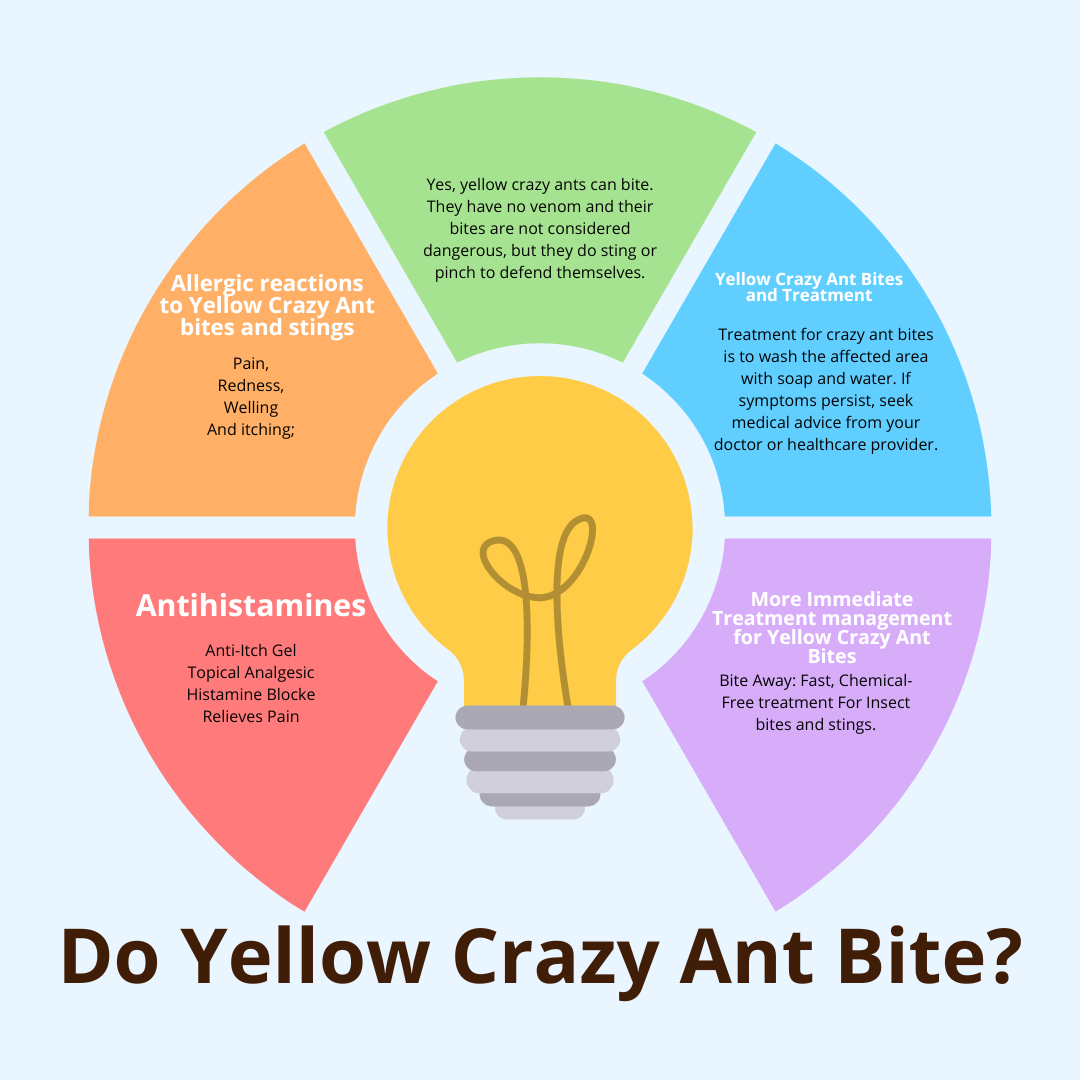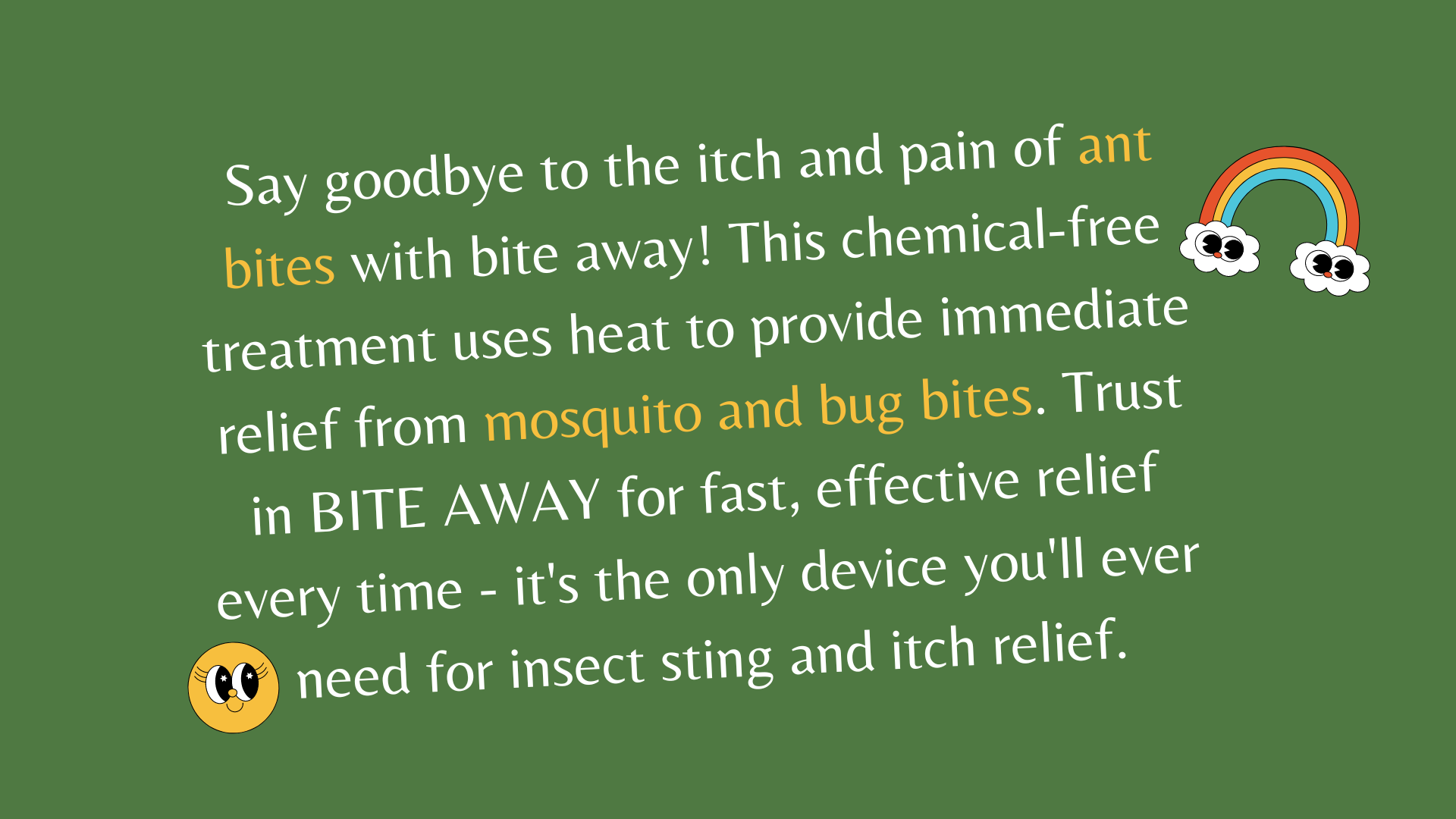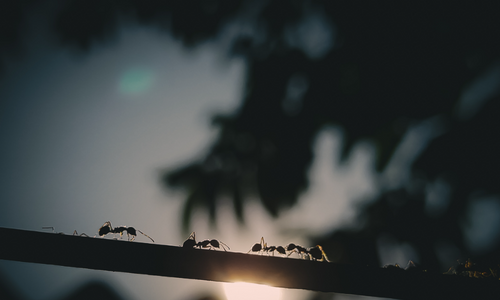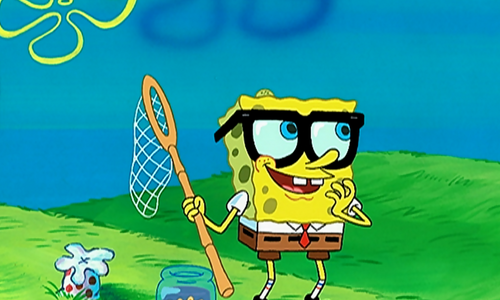Your PERSONAL ANT-CYCLOPEDIA
Yellow Crazy Ant (Anoplolepis Gracilipes)
Yellow Crazy Ant Scientific Classification Chart
Phylum Belonging: Arthropods
Class of Belonging: Insects
Order To Which It Belongs: Hymenoptera
Family In Which It Is Located: Formicidae
Subfamily In Which It Is Located: Formicinae
Genus: Anoplolepis
Species: Yellow Crazy Ant (Anoplolepis Gracilipes)
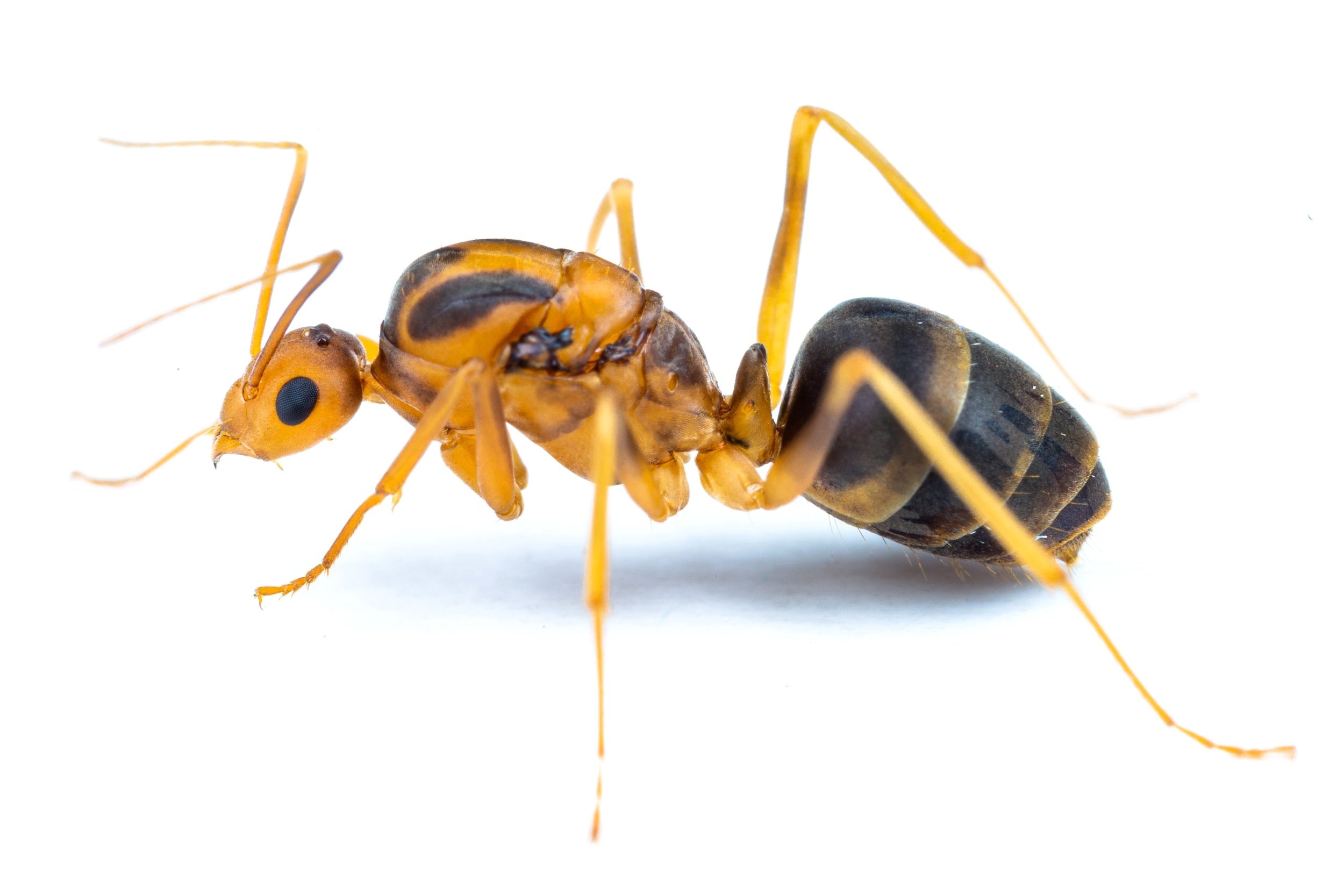
Post Audio Yellow Crazy Ant
The Yellow Crazy Ant, scientific name Anoplolepis gracilipes, is a species of ant with a notorious reputation for being one of the world’s most invasive pests. Originally native to Madagascar, it has now spread to over 11 countries, including Australia, Seychelles, and Hawaii.
The Yellow Crazy Ant’s unique behavior of forming massive supercolonies, combined with its aggressive nature and lack of natural predators, allows it to dominate and displace native ant species, as well as wreak havoc on local ecosystems. In this article, we will delve deeper into the characteristics, behavior, and impact of the Yellow Crazy Ant.
Yellow Crazy Ant Identification
“Pest Stats”
| Color | Yellow to brownish ant. Abdomen is dark brown, sometimes striped. |
| Legs | Legs are very long |
| Shape | Body is long and slender |
| Crazy Ant Size | body about 5mm long |
| Antennae | Antennae is very long |
| Region | East Africa, Australia (Brisbane), Southeast Asia, and some islands in the Pacific. |
Christmas island yellow crazy ant supercolonies
They first arrived on the island in 2001 and have since formed supercolonies across parts of Christmas Island with some containing up to 100 million individuals.
These colonies can rapidly spread out and take over large areas of land.
To control their infestation researchers have employed a variety of methods including baiting with poisoned bait, spraying insecticides from helicopters, digging trenches around ant nests to starve the colony or even injecting naturally occurring toxins into ant mounds.
What does Yellow Crazy Ant Look Like?
Description
The Yellow Crazy Ant (Anoplolepis gracilipes) (Also known as the long-legged ant or Maldive ant) is an invasive species of ant that originated from Africa but has spread to multiple locations around the world. It gets its name from its bright yellow color and erratic, unpredictable movements. The ants are relatively small, measuring up to 4mm in length and having a thin body with long legs and antennae. They have been known to establish large colonies in human-made structures like buildings, as well as various plants including grasses, shrubs, trees, fruits and flowers.
These ants feed on a variety of food sources including dead insects and other invertebrates as well as sweet substances such as honeydew excreted by other insects.
They can also damage crops by eating through fruit rinds or attacking seedlings before they reach maturity.
Geographical distribution
The Yellow Crazy Ant (Anoplolepis gracilipes) is native to East Africa but has been spread by human activities to other areas of the world, including parts of Australia, Southeast Asia, and some islands in the Pacific. In Australia, it is commonly found in coastal Queensland and Northern New South Wales.
Yellow Crazy Ant Distribution Map In Us
This arthropod is not native to the United States. It has been found in some parts of Florida, Hawaii, and Texas.
In Florida, it can be found mostly near coastal areas such as Miami-Dade County, Palm Beach County, Broward County, Pinellas County, and Lee County.
In Hawaii, they have been observed on Oahu and Maui islands while in Texas they are mainly seen around the Houston area.
Yellow Crazy Ant Arizona
Yellow Crazy Ant Florida
Yellow Crazy Ant Texas
Yellow Crazy Ant Georgia
Yellow Crazy Ant Hawaii
Yellow Crazy Ant Atlanta
Yellow Crazy Ant California
Yellow Crazy Ant Dallas
Yellow Crazy Ant Distribution By Continent
Australia: The yellow crazy ant is a native of the Indian subcontinent and has become a major pest in parts of northern Australia. It is found throughout most of tropical and subtropical North Queensland, as well as various islands in the Torres Strait.
How Did The Yellow Crazy Ant Get To Australia?
This arthropod is thought to have been introduced to Australia via cargo ships sometime in the early 1900s, arriving from India or Africa.
The species has since spread throughout coastal areas of northern and eastern Australia.
How Does The Yellow Crazy Ant Affect Australia’s Economy?
It has caused significant damage to Australia’s environment and its economy. The ants, which are native to Africa, have been introduced into Australia without natural predators.
This has allowed the ant population to increase rapidly across a wide range of habitats, resulting in the extensive destruction of agriculture crops and biodiversity.
In areas where the ant populations are particularly concentrated, they can reduce crop yields by up to 50%. They also compete with livestock for food sources and displace native wildlife species such as lizards and birds.
Overall, the economic impact of the Yellow Crazy Ant on Australian agriculture is estimated at hundreds of millions of dollars annually.
Africa: This species has been reported in numerous African countries including South Africa, Ethiopia, Nigeria, Kenya, Tanzania, Uganda, and Zimbabwe. Reports from Madagascar are uncertain.
Asia: In Asia, it is present in India, Sri Lanka, Myanmar (Burma), Vietnam, and Thailand – but not China or Japan yet. It was first discovered on Christmas Island near Australia in 2001. Europe: There have been no reports of this ant species occurring naturally on any European continent or island to date; however there are anecdotal reports that suggest accidental introductions may have occurred through international trade routes which could lead to localized infestations.
Initially, the Yellow Crazy Ant shouldn’t be found in America.



Join The Ant Farming Club!
If you are looking for an Ant Farm and you don’t know which one to choose, or on the other hand you already have your first ant farm, but you don’t know how to grow your colony, take care of it or feed it. Here we offer you the best tips and products to make your colony grow healthy and strong.
In the next section, you will also find advice from professionals to choose the best products on the market such as:
- Luminous Gel
- Ant Farm Sand
- LED light
- Live Ants
- Full Ant Farm Kits For Kids
Ant Farming Club is perfect for kids wanting their first ant farm or schoolteachers wanting to show their students the biology of ants in a natural habitat.
Join
Join and learn all about the world of ants and ant farming.
Products & Discounts
Find discounts and advice from professionals about the best products on the market in 2022.
Meet
Connect with people who are passionate about the world of entomology.
Do Yellow Crazy Ant Bite?
Yes, yellow crazy ants can bite. They have no venom and their bites are not considered dangerous, but they do sting or pinch to defend themselves. (Mostly as a defense system).
Yellow Crazy Ant Bites and Treatment
Crazy ants do not typically bite humans. However, if they feel threatened or disturbed, they may bite as a defensive maneuver to ward off predators. The bites are usually mild and cause minor irritation and swelling at the site of the bite.
Treatment for crazy ant bites is to wash the affected area with soap and water. If symptoms persist, seek medical advice from your doctor or healthcare provider.
Allergic reactions to Yellow Crazy Ant bites and stings
While they are usually not aggressive toward humans, they can bite or sting if disturbed or provoked.
The bites may cause mild symptoms such as
- Pain,
- Redness,
- Welling
- And itching;
However severe allergic reactions are also possible. Symptoms of an allergic reaction include difficulty breathing, hives/rashes on the skin, dizziness/weakness due to low blood pressure (hypotension), nausea or vomiting. If any of these symptoms occur after being bitten or stung by yellow crazy ants seek medical attention immediately as it could be life-threatening.
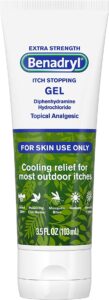
About this item
- Benadryl Extra-Strength Anti-Itch Gel temporarily relieves pain and itching associated with insect bites, minor burns, sunburn, minor skin irritations and rashes due to poison ivy, poison oak and poison sumac.
- Topical analgesic gel provides cooling, anti-itch relief from most minor pains and outdoor itches associated with insect bites.
- The cooling gel provides the relief of pain and itching associated with insect bites.

More Immediate Treatment management for Yellow Crazy Ant Bites:
Long-term Treatment management:
1. Monitor the ant population to assess whether the treatments are effective and identify any new sources or nest sites that may need treatment.
2. Utilize baiting techniques with low-toxicity bait labelled for use against crazy ants, such as borax-based gel baits (e.g., Terro Ant Killer). Place these in areas where nesting activity is suspected, such as around furniture legs and electrical outlets.
3. If necessary, apply a low-toxicity insecticide liquid spray labelled for use against crazy ants. Be sure to follow all product instructions when applying sprays indoors and outdoors, including keeping people and pets away from treated areas until dry (usually at least four hours).
4. Consider treating outdoor locations with dust such as diatomaceous earth that can act as an abrasive barrier between the colony’s nest site and other parts of your property. Be sure to follow all product instructions when applying this type of product inside or outdoors, including notifying neighbours if you plan on controlling super colonies near shared properties or rights of way (e.g., sidewalks).
5. Use exclusion methods such as door sweeps, window screens, and caulking cracks/crevices to help prevent entry into buildings through gaps around doors/windows, etc.

About this item
- Benadryl Extra-Strength Anti-Itch Gel temporarily relieves pain and itching associated with insect bites, minor burns, sunburn, minor skin irritations and rashes due to poison ivy, poison oak and poison sumac.
- Topical analgesic gel provides cooling, anti-itch relief from most minor pains and outdoor itches associated with insect bites.
- The cooling gel provides the relief of pain and itching associated with insect bites.

YOU CAN ALSO LISTEN HERE!
Audio Yellow Crazy Ant 2
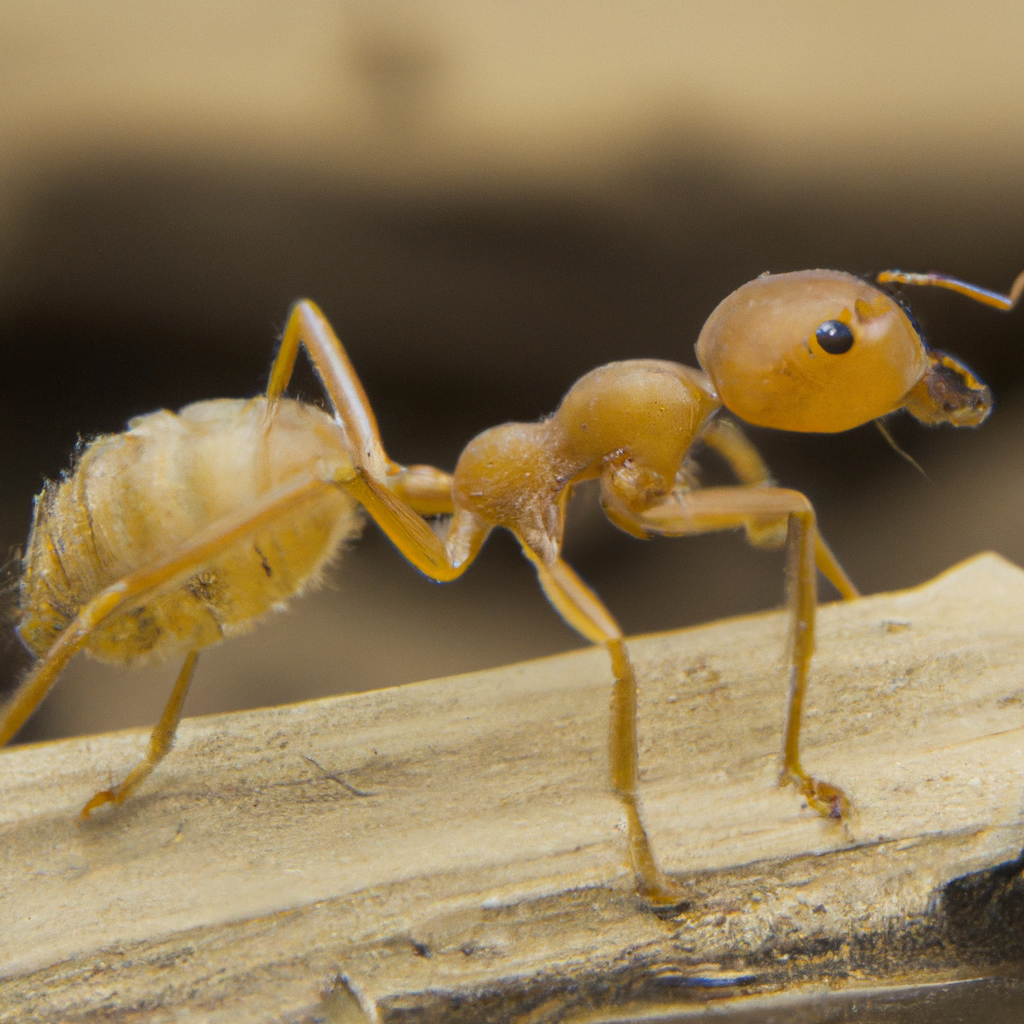
Natural Behavior Yellow Crazy Ant (Maldive ant)
As part of its inherent mannerisms, the crazy ant species exhibit diurnal foraging habits, abode either on land or up in trees, and feed on diverse invertebrates. Furthermore, the erratic ants establish settlements housing multiple queen ants, enabling swift territorial expansion across vast regions. The magnitude of these colonies can reach such unprecedented levels that they’ve been observed to drastically decrease the populations of rivaling bugs due to resource-related contests.
Overall, the physical characteristics of yellow crazy ants make them easily recognizable and distinguishable from other ant species. Understanding their physical description is the first step in identifying them in their natural habitat.
Interactions with Other Species
Yellow crazy ants are known to have a significant impact on the ecology of their habitats as they can outcompete other ant species for resources, leading to a decline in their population. They are also known to have a detrimental impact on the nesting success of birds, such as the Christmas Island Frigatebird, which nests on the ground and is vulnerable to ant predation. Additionally, they can have a negative impact on other invertebrate species, especially those that rely on nectar from plants, as the yellow crazy ants tend to protect honeydew-producing insects and deter other nectar-seeking insects.
The Future of Yellow Crazy Ants
In conclusion, the future of yellow crazy ants is uncertain. The damage they have caused to ecosystems, particularly on islands, is significant. They not only displace native species but also disrupt the natural functioning of ecosystems. The success of their invasion can be attributed to their aggressive behavior, large colony sizes, and ability to form super colonies.
Efforts to control and eradicate yellow crazy ants have been challenging due to their ability to quickly adapt to new environments and to spread rapidly. However, there are ongoing research and management programs being undertaken to limit the impact of this invasive species.
One of the key approaches to managing yellow crazy ants is through the use of baiting. This involves the placement of toxic baits that are attractive to the ants, which they then carry back to their colonies. Another approach is through the use of physical barriers, such as tree bands, which prevent ants from climbing up trees and accessing their food sources.
It is important to continue monitoring the spread and impact of yellow crazy ants, and for governments and communities to work together to manage their populations and protect native ecosystems. By understanding their natural behavior and habitat, we can better prevent and manage the spread of this invasive species.

Funny Fact About Yellow Crazy Ant
Where Does The “Crazy Ant” name come from?
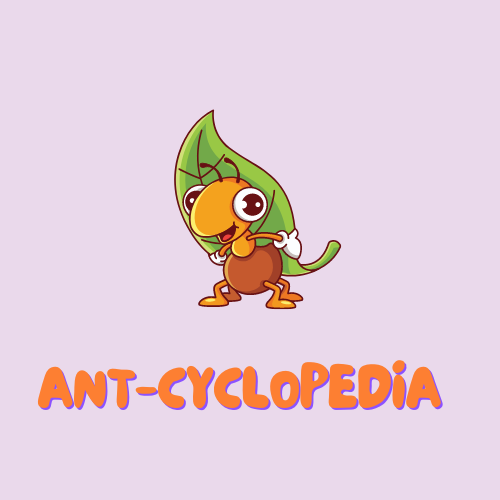
Did you know that the Yellow Crazy Ant can form super colonies, consisting of millions of ants? That’s right! These tiny creatures have the ability to join forces and create a massive army. What’s even funnier is how they got their name – when disturbed, these ants run around erratically in every direction, resembling craziness. They may be small but don’t underestimate them; they are known to invade homes, gardens and even electrical equipment causing damage worth billions of dollars worldwide! It’s quite hilarious how such a little insect could cause so much trouble. So next time you see a Yellow Crazy Ant scurrying around frantically, remember this funny fact about them!
Yellow Crazy Ant Photos And Pictures
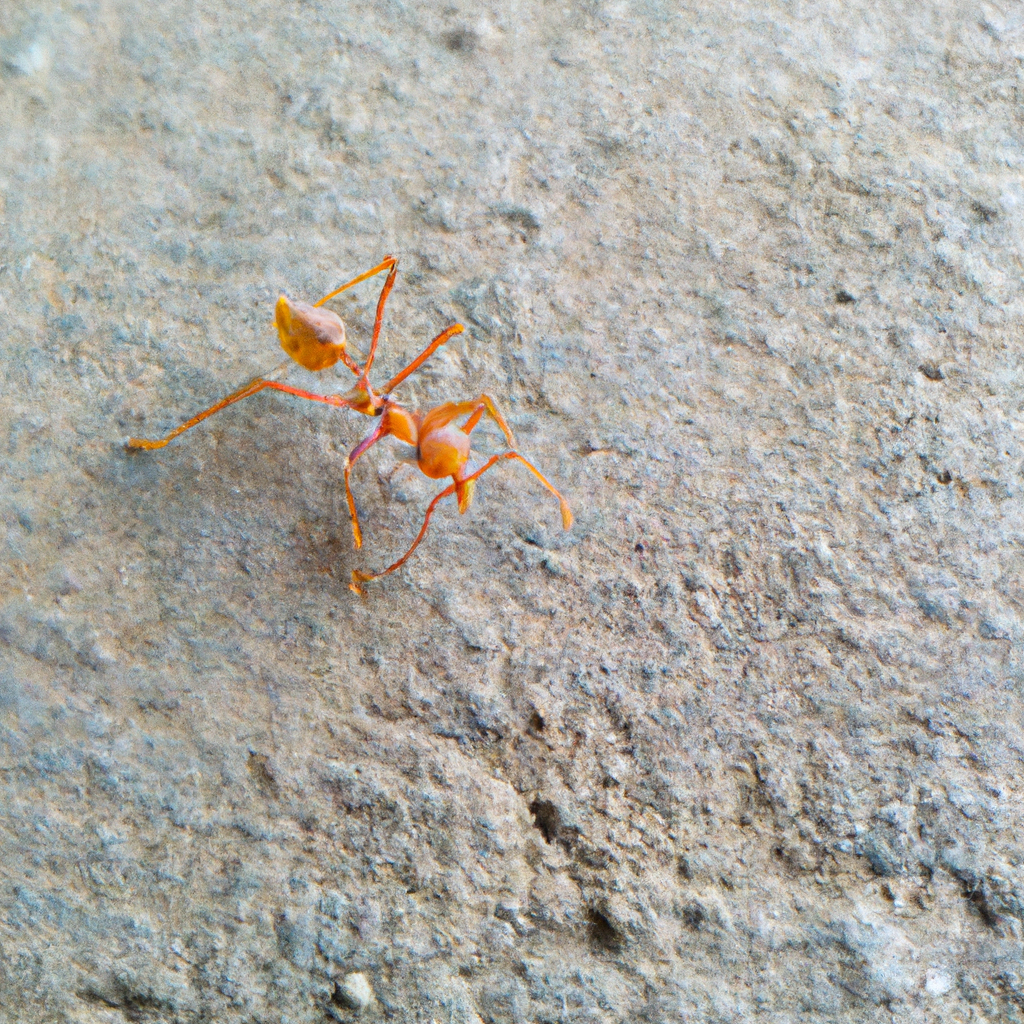
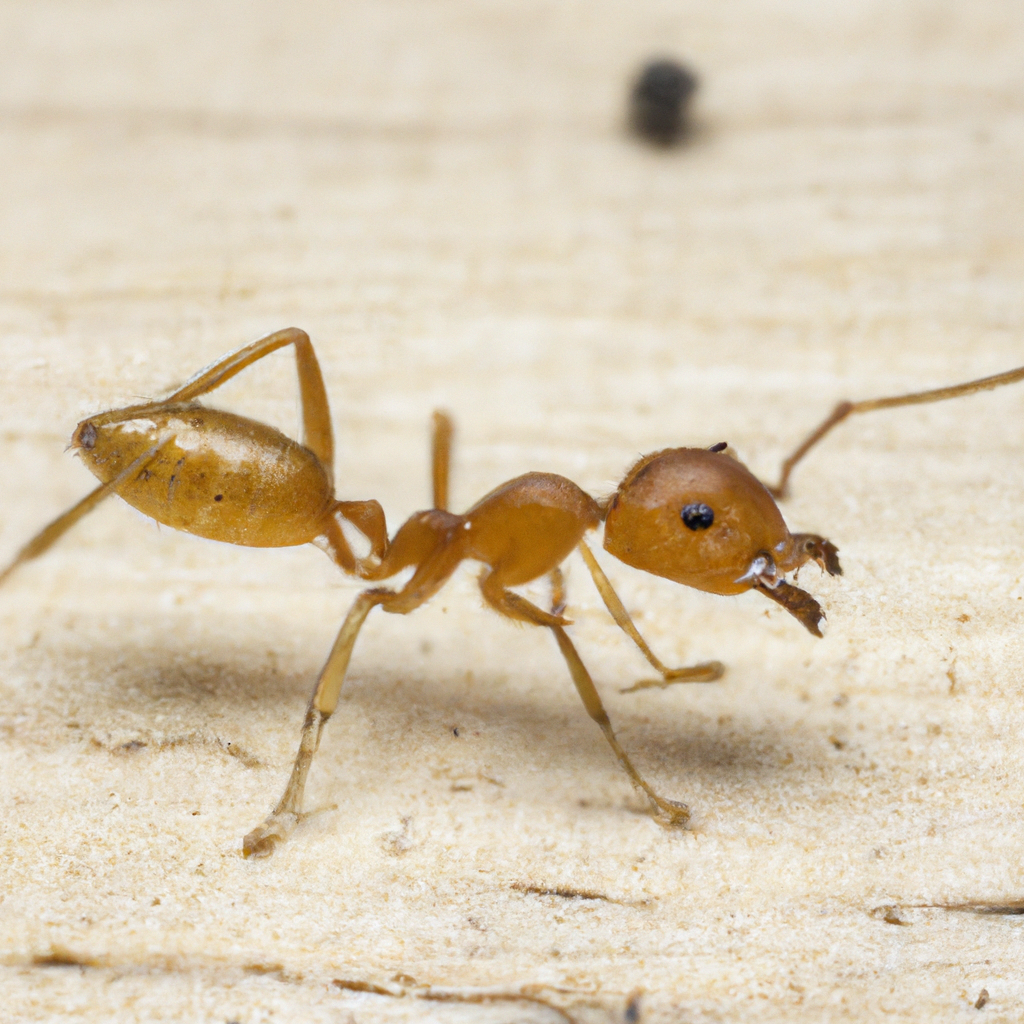



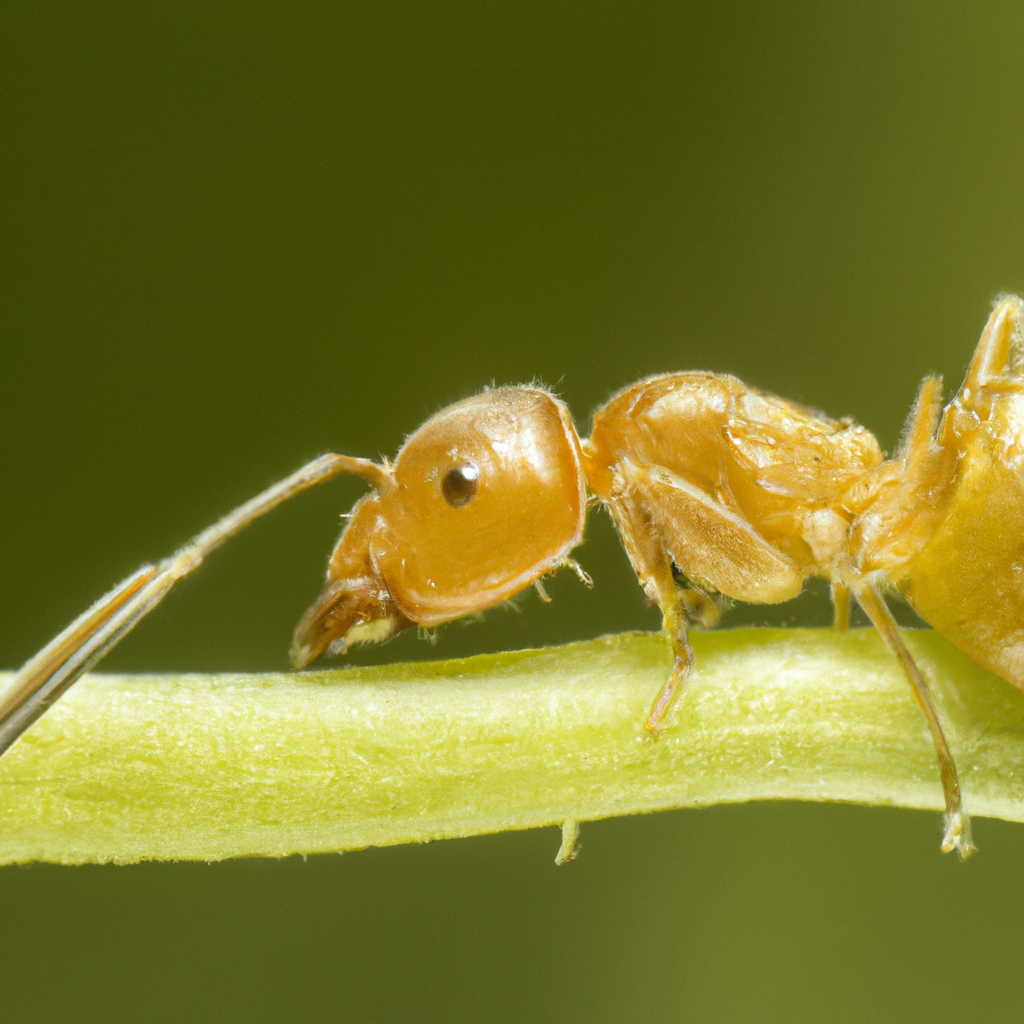

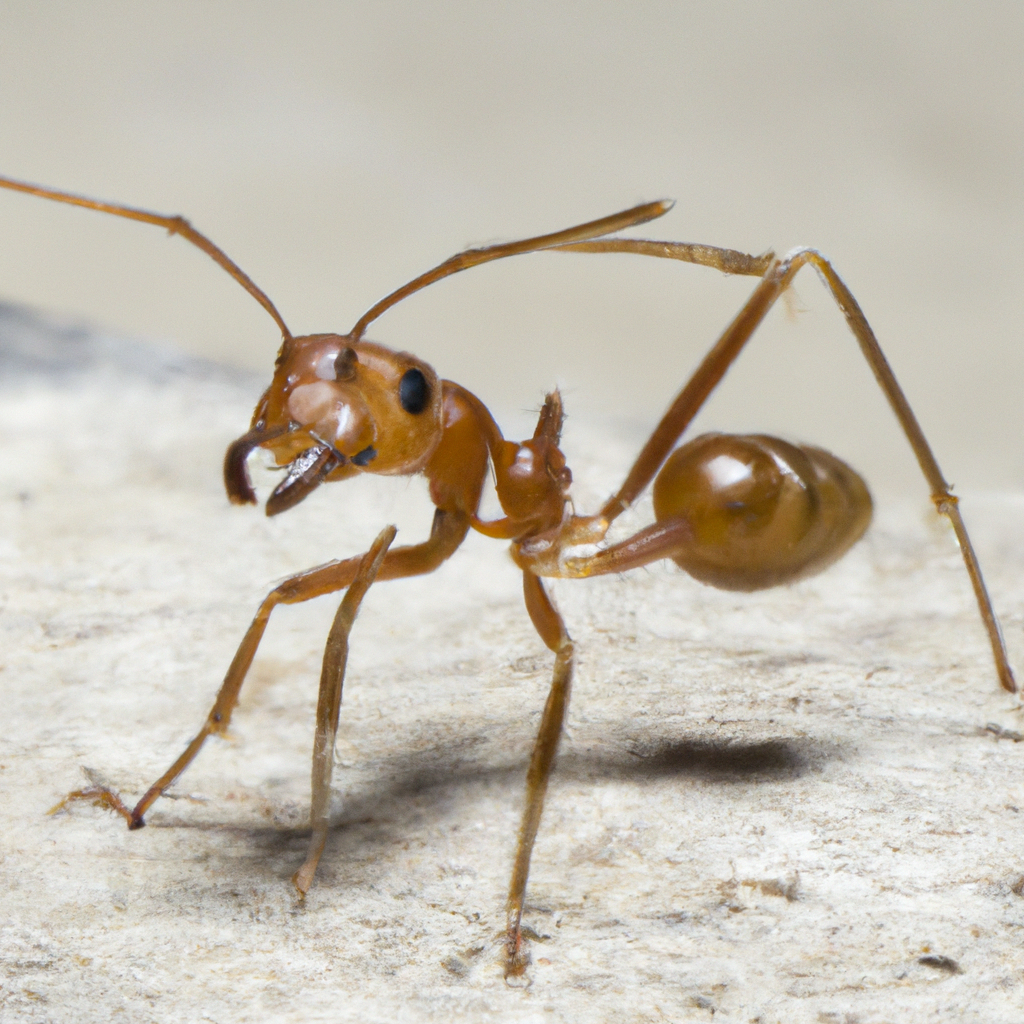
Seasonal Colony Trends [All You Should know]
Yellow Crazy Ant Reproduction (Reproductive Biology)
Yellow Crazy Ants mate during the summer months. The males will swarm around the females and try to mate with as many as possible. After mating, the male dies and the female goes off in search of a suitable nesting site. Once she finds a suitable location, she excavates a tunnel system where she will raise her young.
Mating Habits and Behaviors of Yellow Crazy Ants
Yellow crazy ants are highly promiscuous, and there is no pair bonding between males and females. Mating occurs randomly between any two individuals. Males will mate with multiple females, and females will mate with multiple males.
Mating rituals involve the male mounting the female from behind and grasping her with his legs. He then bends his abdomen up to meet hers, and transfers sperm from his genital opening to hers. The process takes about 30 seconds to a minute.
After mating, the female yellow crazy ant will go off on her own to build a nest and raise her young. She does not receive any help from the male.
Reproductive Biology
The queen ant is responsible for reproduction within the colony. She will lay eggs which will hatch into larvae. The larvae will then go through a series of molts before they turn into adults. Once they become adults, they will either become workers or soldiers.
Reproductive Strategies
There are two main types of reproduction in yellow crazy ants: sexual and asexual. Sexual reproduction is the most common type of reproduction among these ants and involves the transfer of sperm from a male ant to a female ant. Asexual reproduction, on the other hand, does not involve the transfer of sperm and can occur via parthenogenesis (i.e., development of an embryo without fertilization) or by budding (i.e., new individuals breaking off from existing ones).
Interactions between Males and Females
There are many interesting interactions between males and females of the yellow crazy ant species. For example, when a male ant attempts to mate with a female, she will often arch her body and release a pheromone that attracts other males. This results in a “mating ball” in which the female is surrounded by several males all attempting to mate with her.
The female may also use her pheromones to attract multiple males to her location, creating a sort of “harem.” In this case, the male ants will compete for the chance to mate with the female by fighting each other. The winner of these fights will then be able to mate with the female.
Interestingly, yellow crazy ants (also known as the long-legged ant or Maldive ant) have been observed engaging in what is known as “tandem running.” This is when a male and female ant run together side-by-side while the male deposits sperm onto the ground. The female then collects this sperm and uses it to fertilize her eggs. Tandem running has also been observed between two females, or between a male and multiple females.
The mating habits and behaviors of yellow crazy ants are fascinating to study, as they display complex social structures. It is important to know the different ways in which these ants mate in order to better understand their behavior and how it affects their environment. We can also use this knowledge to help us better develop our own strategies for managing pest populations or even introducing new species into an area.
Yellow Crazy Ant Environmental Impact
How does the yellow crazy ant affect the environment?
The environmental impact of the yellow crazy ant (Anoplolepis gracilipes) is wide-reaching and potentially devastating. This brave species has been spreading rapidly throughout Australia, Asia, and Pacific Islands since its introduction to a number of these regions via human intervention during the early 20th century. It is an invasive species that is capable of quickly outcompeting native ants for food resources as well as occupying nest sites. In addition, it has become known for its habit of forming dense supercolonies that can occupy large areas; in certain places like Christmas Island it even caused local extinctions due to competition with or displacement of indigenous fauna. As a result, this ant poses considerable risks to biodiversity within affected ecosystems as well as agricultural production in some cases due to crop damage caused by their presence.
Yellow Crazy Ant Impact And The Hawaiian Yellow Faced Bee
The Hawaiian yellow-faced bee is a species of native bee found in Hawaii. They are important pollinators, helping to fertilize plants and maintain the local food web. The yellow crazy ant, on the other hand, has become a major pest in some parts of Hawaii.
These ants spread rapidly and consume or displace native insects like the Hawaiian yellow-faced bee.
Yellow Crazy Ant Human Impact
Threats To Humans (Are Yellow Crazy Ant harmful?)
The impact of this species on humans is both direct and indirect.
Directly, they can be a nuisance as they invade homes and sting people with their formic acid secretions. They also can affect crops, livestock, and native species by competing for resources or hunting them for food.
Indirectly, they contribute to soil erosion by damaging vegetation through their rapid movement over the surface of the earth. Additionally, populations of this invasive species are often extremely dense which can lead to an overall decline in local biodiversity due to competition from other species attempting to utilize limited resources or reduce predation pressure in certain areas.
YOU CAN ALSO LISTEN HERE!
Post Audio Yellow Crazy Ant 3


Yellow Crazy Ant Education (Yellow Crazy Ant Life Cycle)
This ant species has a complex life cycle, which includes both sexual and asexual reproduction.
1. Egg Stage: The eggs are laid by the queen in batches of 25 to 50 at a time, encased in cocoons made of silk and soil particles.
2. Larva Stage: After hatching, larvae enter into their pupae form within about 2 weeks where they remain for roughly 4 to 8 weeks before maturing into adults. In this stage they feed on predigested food from other workers or the queen herself until reaching adulthood.
3. Adult Stage Lifespan: Fully mature adult ants can live as long as 3 years depending on environmental conditions such as temperature and humidity levels; during this time worker ants will maintain the colony’s activities while queens produce new eggs for continued growth of their colonies population size each season . They’re capable of producing up to 15 thousand eggs per female over her lifetime!
4 Reproduction Process : Yellow Crazy Ants reproduce through both parthenogenesis (asexual) & sexual forms of reproduction with males being much rarer than females inside any given colony; although male drones have been known to fly out (Nuptial Flight) in search for mates once every few months when environmental conditions are favourable enough for them too survive outside their nests long enough!
Environmental Requirements
They have robust populations and survive well in humid climates, but they do require certain environmental conditions to thrive.
Temperature: Yellow crazy ants are thermophilic, meaning they prefer warmer temperatures of at least 75-82°F (24-28°C). In some areas, such as Hawaii, summer temperatures can reach up to 100°F (38°C), which suits them perfectly.
Humidity: While these ants don’t need a very humid environment like other insects do, they still require moisture for survival. Relative humidity levels should remain above 60% during most times of the year.
Lighting: Although yellow crazy ants don’t need direct sunlight to survive and can even tolerate low light intensity indoors; they will reproduce rapidly when exposed to bright fluorescent lighting or natural sunlight outdoors.
Water Supply: Like all living creatures, these ants also need water for drinking and cleaning purposes as well as moist soil for egg laying and nest building activities.
Yellow Crazy Ant Nutrition And Diet
The diet of the yellow crazy ant consists mainly of sugary substances such as nectar and honeydew. They also feed on other insects, small invertebrates, and carrion. These ants have been known to scavenge for human food scraps and pet food left out in open areas as well.
Yellow Crazy Ant Queens (Yellow Crazy Ant Queen Appereance)
The Yellow Crazy Ant queens are characterized by their light yellow color and long antennae, which can reach lengths up to three times the length of their bodies.
The queens of this species are significantly larger than the worker ants, with an average body length of approximately 10mm compared to around 5-6mm for workers.
Queens also have wings, although they do not fly but instead use them in order to find and mate with males from other colonies in order to start new colonies.
In addition, they lay eggs at a much faster rate than workers; as many as 500 per day compared to just 40-50 for workers.
Finally, unlike most ants which tend to die shortly after founding a colony or laying eggs, Yellow Crazy Ant queens can live for several years within the same colony and continue contributing towards its growth throughout that time period.
Purpose In The Colony
The queen of a colony of crazy ants serves the same purpose as any ant queen; to lay eggs, ensuring the survival and growth of the colony. The queen is also responsible for producing pheromones that help keep the colony organized and functioning properly.
The Best Products 2023
Formicarium
Formicarium
Ant Farm
Ecosystem
Entomology supplies
Test Tube Packs
Pipettes
Feeding Dishes
Ant Foods
Ant Nectar
Feeders
Eco-Fresh Rice Worms
Fly Larvae
Kits
Terrarios
Nest Kit
Ant Farm Sand
Ant Farm Neon Gel
YOU CAN ALSO LISTEN HERE!
Post Audio Yellow Crazy Ant 4
Yellow Crazy Ant Pest Prevention & Control
(How to deal with this great adapter?)
But not everything in life is rosy. Sometimes our encounter with the yellow crazy ants is not as friendly as we expected. This happens because yellow crazy ants are
known for their destructive habits, as well as their disruptive behavior of forming massive colonies that can overwhelm entire ecosystems.
This can become a real problem, especially if our new friends have decided to take our homes as their new homes. In this case, it will be necessary for us to apply all our knowledge about these small pests, to drive them away causing as little damage as possible, since this will not only be negative for the ants, but it could also be a real challenge for us.
In this section, we’ll dive into everything you need to know about Yellow Crazy Ant pest prevention and control, from identifying them to effective treatment options. So let’s get started and say goodbye to those rogue ant armies!
Wanna learn more about Ants? Join an Online Community of more than 1000 Readers Around the Country.
Here you can sign in to our newsletter to receive daily emails with funny facts, interesting details about ants, step-by-step tutorials, and even good practices to have a healthy ant farm colony. We’ll be more than happy to have you in…

How to Get Rid of Yellow Crazy Ant (Easy Steps)
1 – First Step: Inspection & Control
The first step in controlling an Invasive crazy ants’ infestation is to inspect the area for signs of activity.
This includes looking for active nests, trails of worker ants and discarded wings from queens that have mated and moved on.
The surrounding ground should also be checked for any potential food sources such as spilled pet food or sugary liquids that might attract the ants.
If there are known nests, it is important to note their location and size so that they can be monitored more closely in future inspections.
Once an inspection has been completed, control measures can begin with baits or insecticides specifically designed to target yellow crazy ant species.
Baits placed near nest sites will lure workers from their colonies where they will feed off them before returning home carrying poison back to the colony which will effectively eradicate the entire population once consumed by all members within the nest.
Insecticides may also be used if necessary however this should only be done after careful consideration since some chemicals may harm beneficial insects living nearby while failing to provide adequate protection against these pests over extended periods of time.
2 – Second Step: Natural Methods To get rid of Yellow Crazy Ant
Outdoor And Indoor Organic Yellow Crazy Ant Pest Control Products
Diatomaceous Earth
Diatomaceous Earth is a naturally occurring soft sedimentary rock that has been ground down to a fine white powder.
This powder damages the exoskeleton of insects, so it acts as a barrier that Yellow Crazy Ant won’t cross.
If you have potted plants on a shelf, you can put a small amount of diatomaceous earth down by the legs of the shelf, preventing ants from getting up onto the plants.
These barriers can be put virtually anywhere, both indoors and outdoors.
While Diatomaceous earth is safe for humans to handle and even eat, it does create fine dust that should not be inhaled.

PROS About Diatomaceous Earth
Among its most striking advantages is the low risk to the health of people, children, and pets, as well as the residual years that this compound can have in our home, providing extra protection against pests. This material is not recommended for use on carpets or floors that you would vacuum.
CONS About Diatomaceous Earth
Although this product represents a non-chemical solution to avoid chemical pesticides. This powder can have some drawbacks. An example of this is that insects need to have direct contact with the material, as well as prolonged contact for it to have a greater effect. This means, that if we decide to use this. We must distribute it throughout our home in large quantities. On the other hand, Diatomaceous Earth must be kept dry, so it is not a good idea if we want to use it in our gardens that are damp from irrigation.
Despite its low toxicity. This material could not be used to kill ants if it did not have some level of danger to the health of insects, so the use of dust masks is recommended, as well as applying it in ventilated areas since this dust could cling to the mucous membranes of the nose and mouth. Also, the dust could fly and generate allergies if we apply it in places where there are fans or air conditioning.
Boric Acid
Boric Acid is a type of Acid found in many naturally occurring minerals, such as borax. Borax is found in many cleaning products, including some types of toothpaste.
Boric Acid has a very low toxicity level for mammals but not for ants. It interferes with their digestive system and slowly terminates them.
The trick is to keep the level of boric Acid low enough so that it travels through the colony and makes it to the queens and young before killing the ants.
I will give you a personal recommendation of a product that is currently on the market called Terro. This contains borax, and I found it effective against Yellow Crazy Ant.
You can also find recipes online to make your own bait at home using borax. (Here are the steps if you are interested)

PROS About Boric Acid
This product dissolves easily in water, which allows us significant savings. On the other hand, it is more granular than powder. Which makes it less likely that we will inhale it by mistake.
It is useful for other types of pests, such as cockroaches.
CONS About Boric Acid
In very humid climates, if not stored properly, it can become damp and ruined. Therefore, it is recommended to store the mixture in a gallon Ziploc bag to keep it dry and protected when not in use.
Essential oils
Yellow Crazy Ant communicate with each other using pheromones. A forager that finds food marks a trail on the way back to the colony. This scent trail is followed by other ants, and these ants then reinforce the trail when they head back to the colony with food.
Pheromones also help ants tell each other apart, warn each other of danger and communicate all sorts of messages we’re only beginning to understand.
Most essential oils have a very strong fragrance. We can use this strong fragrance to mask pheromone trails and disrupt the coordination of ants. This method, in addition to being very efficient, allows you to drive away the ants in a natural way without causing them harm.
Essential oils can be added to soapy water that can be used to clean pots and shelves where we keep cacti and succulents. This will mask any previous messages ants left behind to tell other ants… HEY! There is a good food source, water, or shelter.
My Favorite essential oils to use for ants are:
- Peppermint
- Cedarwood
- Lemongrass and
- Clover
However, there is a high range of essential oils that we can use to keep ants away from our homes. Below we offer you a select list of the most efficient oils with the best results on the market.

Pros About Essential Oils
These essential oils represent rapid homemade elimination and residual repellency. which means many months of additional protection.
On the other hand, this represents a highly respectful pest control with our environment.
In the case of living with other beneficial insects for us, such as bees or other pest-control insects. These represent minimal risk.
Finally, as we all know. Essential oils offer us a natural and pleasant fragrance for our home.
Cons About Essential Oils
Essential oils are very useful for many purposes despite their effectiveness in pest control. We may need large amounts to eradicate large ant colonies. Essential oils are expensive, so it can cost us a few dollars to completely eradicate an ant colony.
3 – Third Step: Insecticides and Ant Baits To Control Yellow Crazy Ant (Best Crazy Ant Killer)
Best Ant Bait For Yellow Crazy Ant (Best Traps)
We recommend using an ant bait containing borax or boric acid as the active ingredient. These baits have been proven to be very effective at controlling Yellow Crazy Ants and other species of ants.
Place the bait in areas where you’ve noticed ant infestations, such as near windows, doors, baseboards, plumbing fixtures and other points of entry for these pests.
Be sure to keep children and pets away from any ant bait products!
MORE YELLOW CRAZY ANT BAITS
- Baits (protein/fat-based baits).
- Honeydew Aphid Baits
- Nectar baits
- Plant product baits as well as sugary carbohydrates.
Sugar feeding cycles
The sugar feeding cycle of a yellow crazy ant starts with them seeking out an area with abundant food sources that contain sugars.
They will then forage in this area in search of the food before returning back to their nest with whatever they have found.
During the night when there is no light present, they will go out again in search of more food but often do not travel too far from home base due to darkness limiting visibility.
While at their nest during daylight hours they consume the sugars and store any excess energy for later use by building up fat reserves within their bodies .
This process continues until all available resources are depleted or new areas are located which can provide more sustenance to satisfy their needs .
Yellow Crazy Ant Protein/Fat Feeding Cycles
The protein/fat feeding cycle of the yellow crazy ant is an important part of its diet.
These ants feed mostly on insects, but also on sugary substances and decaying organic matter. They typically forage in the morning and evening hours, with a break during midday when temperatures are highest.
During foraging sessions they search for food sources like aphids, mealybugs, scales or other small invertebrates that are high in protein and fat content. The workers then return to their colony where they share the food with nestmates by regurgitation or trophallaxis (food exchange between mouthparts).
This provides an essential source of nutrition that allows them to survive harsh conditions such as drought or cold winters.
Additionally, this sharing process also helps maintain social harmony within colonies by promoting solidarity amongst members.
Yellow Crazy Ant Control Using Insecticides
1. Spray a residual insecticide such as Talstar, Permethrin, or Bifenthrin around the perimeter of your house and outside structures to create a barrier that will help prevent Yellow Crazy Ants from entering.
2. Treat any areas inside your home where Yellow Crazy Ants are seen with an aerosol spray containing Pyrethrins or Pyrethroids which should kill them on contact.
3. If you have pets, use baits containing Fipronil specifically designed for controlling ants in order to target their colonies without harming other animals in the area. Add granular bait products like Amdro FireAnt Bait around the perimeter of your property to attract and kill worker ants that may be scouting for food sources further away from their nests.
4. Apply an insecticidal dust like Deltamethrin or Lambda-cyhalothin into cracks and crevices where these pests hide as well as in problem areas outdoors (like flowerbeds). This method will give you long lasting protection against infestations since it can remain active for several months when left undisturbed by rain or irrigation systems.
Pesticide
Yellow Crazy Ant Control Using Pesticides
In cases where the infestation of crazy ants is too large to be managed with non-chemical methods, it can be beneficial to use pesticides for control and complete eradication.
The most effective chemical treatment options include insecticides containing bifenthrin or fipronil, as these are known to have good efficacy against crazy ants.
Spot treatments should first be applied around potential points of entry such as door openings and window frames.
Once any localized colonies or nests that exist outside the home have been treated, broadcast treatments involving a granular or dust formulation can then be used inside and outside the house in areas where ant activity has been observed.
Ant baits may prove useful when treating an area infested with crazy ants as we mentioned before; however, bait formulations must remain dry at all times so they don’t become ineffective by being exposed to moisture from rainwater or other sources.
Subfamilies Of Ants
View More
View More
Ant SubFamily Group 3
View More

Did You Know That…
1. Crazy ants are attracted to electrical current, so they can be found near power outlets and other wiring in buildings (Crazy Ant Electricity). Some experts event think that crazy ants conduct electricity.
2. These ants have been known to create massive colonies that can reach up to 100 million individuals with one queen!
3. If you find yellow crazy ants nesting in plants or trees on your property, prune the tree branches and spray foliage with an insecticide specifically designed for these pests.
4 – Yellow crazy ant predators: Common predators of the yellow crazy ant include spiders, fire ants, and birds such as jays and starlings. Other small animals such as reptiles, amphibians, and invertebrates may also feed on them.
How to Raise an Yellow Crazy Ant Farm Colony? The Ultimate Guide
Are you ready to add some excitement to your bug keeping hobby?
In this section we will talk about the interesting yellow crazy ant. An arthropod that is known for its ability to conquer, as well as its erratic behavior, which is not only powerful, but exotic. An interesting item to add to your ant collection.
But how do you go about raising a successful colony of these ants, and more importantly, how can I find out everything about these animals, from setting up their habitat and feeding them properly, to understanding their behavior and social structure? Well, whether you are an experienced ant keeper or just starting out. Here we will offer you all the necessary information to better understand these interesting animals, and finally decide to start a successful yellow crazy ant colony.
Chapter 1: Getting Started in Yellow Crazy Ant Keeping!
How to get a Yellow Crazy queen ant?
You can purchase a Yellow Crazy Queen Ant from many online ant farms. You will need to make sure that the ant farm you choose is reputable and provides quality queen ants.
You may also contact your local pest control provider for information on where to find a Yellow Crazy Queen Ant in your area.
How to identify a Yellow Crazy queen ant?
These Ants can be identified by their bright yellow color and long legs.
They also have an overall slender build, with a small head, long antennae and a distinctively shaped thorax that is narrower than the abdomen.
You may also be able to spot the black tips on their antennae, which are typically longer than those of other ants in its species group.
Time for a queen ant to start a new colony
It typically takes a yellow crazy ant queen anywhere from 6 to 12 months to start a new colony. It will take the queen some time to find and assess potential nesting sites for her colony, construct nests, lay eggs, and feed worker ants until they are able to forage on their own.
Capture the Yellow Crazy Ant queen with care.
Yellow Crazy Ants are a highly invasive species and can be difficult to capture. It is important to use care when attempting to Captive the queen ant.
Firstly, look for signs of a nest or colonies such as trails of ants leading away from food sources or piles of dirt mounds where they may have dug their tunnels.
If you spot an active colony, then carefully dig up one side of the mound with your hands, being careful not to destroy any nests in the process. You should see chambers filled with ants that contain eggs and larvae which indicate it is a working colony and should contain a queen ant.
Gently scoop out these chambers and place them into an escape-proof container (e.g., Tupperware). Then transfer them back to your home or garden so that the ants can set up their new habitat while you try to find the queen ant amongst them all!
How to feed your Yellow Crazy Ant
1. Provide fresh food: Offer your ants a variety of small, nutritious foods such as pieces of fruits or vegetables, small bits of cooked egg and meat, or ant jelly (specialty food for ants found in pet stores).
2. Place the food on the top layer of soil: Yellow Crazy Ants are ground feeders and will search for their meals close to where they live. Place the food directly onto the surface of the soil so that it’s easy for them to find.
3. Offer honey water droplets: You can also offer your ants a special treat by placing tiny drops of honey water around their enclosure every few days. This sweet treat will provide them with some much-needed energy!
4. Make sure they have access to moisture: Your yellow crazy ants need access to moisture all year round in order to survive and thrive – make sure you keep an eye out for any signs that there isn’t enough available when you’re feeding them!





The Best Products 2023
Formicarium
Formicarium
Ant Farm
Ecosystem
Entomology supplies
Test Tube Packs
Pipettes
Feeding Dishes
Ant Foods
Ant Nectar
Feeders
Eco-Fresh Rice Worms
Fly Larvae
Kits
Terrarios
Nest Kit
Ant Farm Sand
Ant Farm Neon Gel
Ant Farm Ecosystems
| Ant Farm For Classroom | Light-up Ant Habitat |
| Ant House With Feeding Area | Wall Hanging Ant Farm |
| An ecosystem with live ants | Ant farm for Preschool |
| Pet Anthill Ant House | Nest Insect Castle |
| Glow In The Dark Ant Farm | Aquariums For Ants |
| Ant Farm With Instructions | Ant Farm With Queen |
| LED Ant Farm for Live Ants | Connectable Ant Farm |
| Ant Farm For Kids | New Large Plaster Ant Farm |
| Pocket colony | Ant Farm With Queen |
Ant Farm Supplies
| Feeder | Feeding Area |
| Tunneling sand | Tunnel starter tool |
| Ecological Ant farm gel | Ants farming aphids |
| Nutrition and Care | Ants farming mushrooms |
| Ecological blue gel | Fungus for ant farms |
| Handcrafted Wood | Ant habitats |
| Ant Plastic Tubes | Ant Glass Tubes |
| Food for ants | Ant Farm Nectar |
| Ant Farm Live Insects | More Supplies |
Live Ants For Sale
| Live Ants | Best ant species |
| Coolest Ants To Keep | Interesting Ants |
| Fungus-farming ants | Exotic ants |
| Big Ants | Buy Queen Ant |
| Buy Worker Ants | Buy Soldier Ants |
| Domestic ants | Fungus farming ants |

